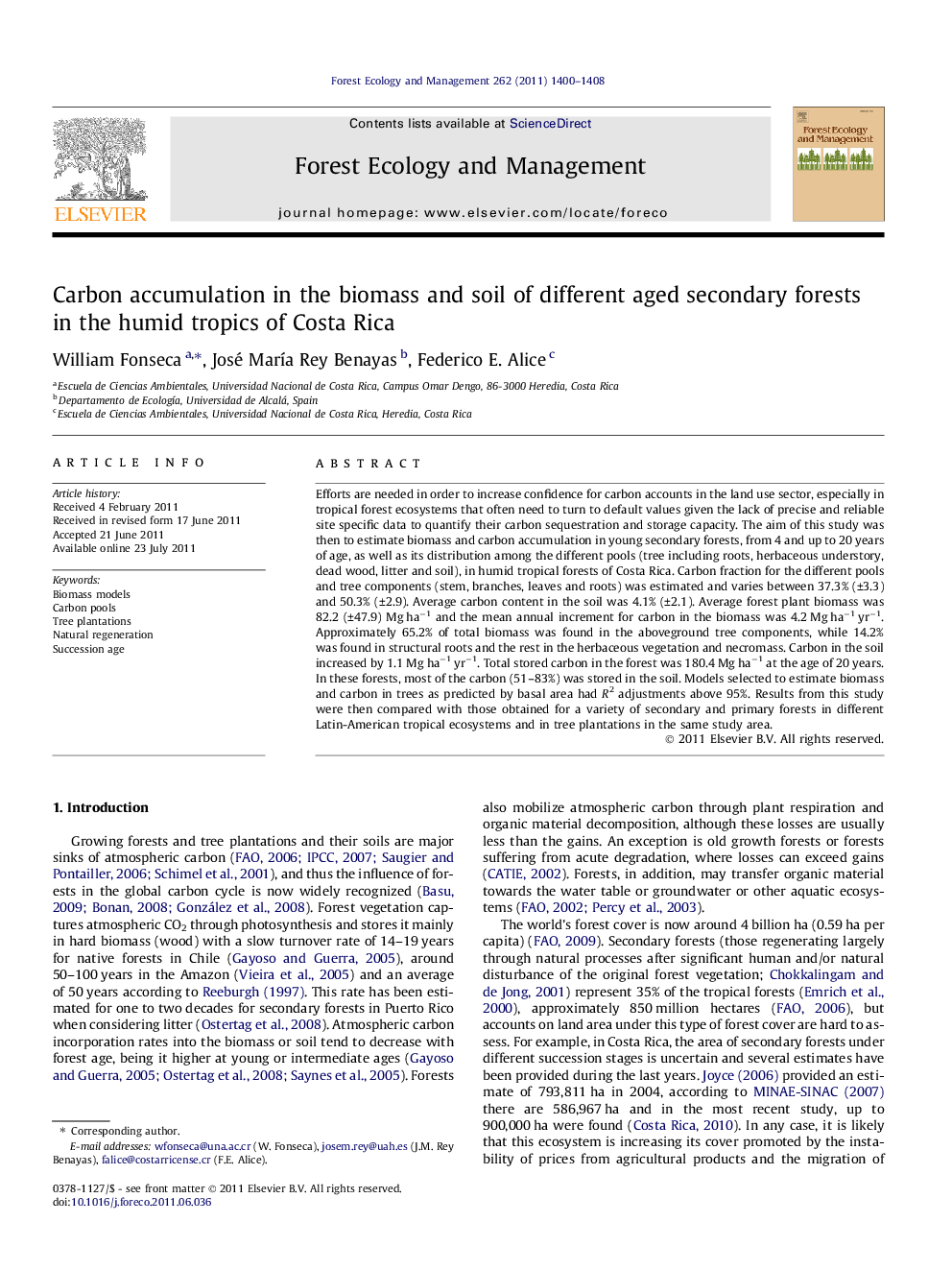| کد مقاله | کد نشریه | سال انتشار | مقاله انگلیسی | نسخه تمام متن |
|---|---|---|---|---|
| 87668 | 159262 | 2011 | 9 صفحه PDF | دانلود رایگان |

Efforts are needed in order to increase confidence for carbon accounts in the land use sector, especially in tropical forest ecosystems that often need to turn to default values given the lack of precise and reliable site specific data to quantify their carbon sequestration and storage capacity. The aim of this study was then to estimate biomass and carbon accumulation in young secondary forests, from 4 and up to 20 years of age, as well as its distribution among the different pools (tree including roots, herbaceous understory, dead wood, litter and soil), in humid tropical forests of Costa Rica. Carbon fraction for the different pools and tree components (stem, branches, leaves and roots) was estimated and varies between 37.3% (±3.3) and 50.3% (±2.9). Average carbon content in the soil was 4.1% (±2.1). Average forest plant biomass was 82.2 (±47.9) Mg ha−1 and the mean annual increment for carbon in the biomass was 4.2 Mg ha−1 yr−1. Approximately 65.2% of total biomass was found in the aboveground tree components, while 14.2% was found in structural roots and the rest in the herbaceous vegetation and necromass. Carbon in the soil increased by 1.1 Mg ha−1 yr−1. Total stored carbon in the forest was 180.4 Mg ha−1 at the age of 20 years. In these forests, most of the carbon (51–83%) was stored in the soil. Models selected to estimate biomass and carbon in trees as predicted by basal area had R2 adjustments above 95%. Results from this study were then compared with those obtained for a variety of secondary and primary forests in different Latin-American tropical ecosystems and in tree plantations in the same study area.
► We accounted for carbon in all pools from different aged secondary forests.
► Soils are the most important carbon reservoir but have low accumulation rates.
► Highest accumulation rates are found in aboveground biomass, specially tree stem.
► Pools usually not measured show an important contribution and should be considered.
► Biomass models at the ecosystem level are recommended under similar conditions.
Journal: Forest Ecology and Management - Volume 262, Issue 8, 15 October 2011, Pages 1400–1408